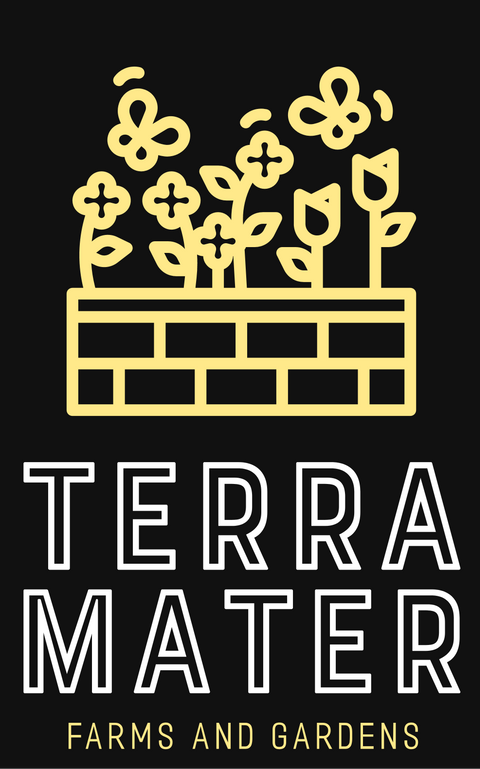Dwarf Pomegranate 'Nana' Seeds (Punica granatum ‘Nana’) – Compact ornamental variety with edible fruit and fiery blooms; ideal for containers, patios, and bonsai cultivation.
Minimum: 15+ Seeds
Add a touch of the Mediterranean to your home or garden with Dwarf Pomegranate (Punica granatum ‘Nana’) — a compact, ornamental fruiting shrub known for its brilliant orange-red flowers, glossy foliage, and miniature, jewel-toned pomegranates. This delightful variety brings the exotic beauty of traditional pomegranates into a manageable size, making it perfect for containers, patios, balconies, and indoor bonsai. Its fiery blooms and glossy leaves make it as decorative as it is productive, offering both beauty and edible bounty in one small package.
🌿 Botanical Details
-
Scientific Name: Punica granatum ‘Nana’
-
Common Name: Dwarf Pomegranate
-
Family: Lythraceae
-
Type: Deciduous shrub or small tree
-
Growth Habit: Compact, rounded, multi-stemmed
-
Mature Height: 2–3 ft (60–90 cm)
-
Lifespan: Up to 10–15 years with proper care
🌞 Growing Conditions
The Dwarf Pomegranate thrives in sunny, well-drained conditions, tolerating heat and drought once established. It’s an excellent choice for USDA Zones 7–11, and can be overwintered indoors in cooler climates. This hardy yet elegant plant adapts beautifully to container culture, making it a favorite among patio gardeners and bonsai enthusiasts alike.
-
Sunlight: Full sun (6–8 hours daily)
-
Soil: Well-drained, sandy or loamy soil; pH 5.5–7.5
-
Water: Moderate; allow soil to dry slightly between watering
-
Temperature: Prefers 65–90°F (18–32°C); protect from frost
-
Humidity: Tolerates dry air; avoid overly damp environments
-
Fertilizer: Monthly during growing season with a balanced organic fertilizer
🌱 How to Grow from Seed
Growing Punica granatum ‘Nana’ from seed is a rewarding way to cultivate this ornamental fruiting shrub. With patience and proper care, it can begin flowering within 1–3 years.
-
Seed Preparation: Soak seeds in warm water for 24 hours to soften the outer coating.
-
Sowing: Plant seeds ¼ inch deep in moist, well-draining seed-starting mix.
-
Germination: Maintain 70–85°F (21–29°C) and consistent moisture. Seeds typically germinate in 3–6 weeks.
-
Light: Provide bright, indirect light or use a grow light until seedlings are established.
-
Transplanting: Move young plants to individual pots when 2–3 inches tall. Harden off before placing outdoors.
🌼 Ornamental & Bonsai Appeal
Dwarf Pomegranate is a showstopper when in bloom, covered in vivid scarlet-orange flowers that attract pollinators like bees and hummingbirds. Its naturally compact form and small leaves make it ideal for bonsai training, where it produces miniature fruits that resemble tiny rubies hanging from delicate branches. The shrub can be pruned into elegant shapes, making it a centerpiece in any indoor or outdoor display.
-
Bonsai Tips: Prune regularly to maintain shape and encourage branching.
-
Wiring: Can be wired gently when young; older branches are brittle.
-
Flowering Season: Late spring to summer, with possible second flush in early fall.
🍎 Fruit & Edibility
Despite its size, Punica granatum ‘Nana’ produces edible fruits—though smaller than standard pomegranates, they are sweet-tart and packed with antioxidants. These miniature fruits can be used in:
-
Fresh eating or garnish
-
Homemade syrups or jellies
-
Dried fruit blends
-
Decorative arrangements and natural dyes
While often grown for its looks, the dwarf pomegranate is a true fruiting variety, giving both ornamental and culinary satisfaction.
🌿 Medicinal & Cultural Uses
Pomegranates have been cherished for millennia as symbols of fertility, health, and prosperity. Even the dwarf variety carries these associations. Traditionally, pomegranate fruit and rind have been used for:
-
Supporting digestive health and circulation
-
Providing antioxidant and anti-inflammatory compounds
-
Natural dyeing and cosmetic applications
In Ayurveda and traditional medicine, pomegranate is often included in tonics for longevity and vitality.
🌻 Companion Planting & Ecological Benefits
-
Pollinator-Friendly: The bright flowers attract bees, butterflies, and hummingbirds.
-
Low-Maintenance: Drought-tolerant once established; resistant to many pests and diseases.
-
Great Companions: Lavender, rosemary, and marigolds complement its growth and aesthetics.
🌳 Container & Patio Growing Tips
-
Container Size: Minimum 10–12 inches deep with good drainage.
-
Pruning: After fruiting, prune lightly to maintain compact shape and encourage new growth.
-
Overwintering: Move indoors before frost; place in bright light and reduce watering.
-
Repotting: Every 2–3 years to refresh soil and manage root growth.
🌎 Sustainability & Versatility
Dwarf Pomegranate is a sustainable, multipurpose plant—ornamental, edible, and ecological. Its compact nature allows even small-space gardeners to experience the joy of fruit-bearing plants. Perfect for urban balconies, greenhouses, or edible landscapes, this resilient shrub bridges beauty and function.
💡 Summary
The Dwarf Pomegranate (Punica granatum ‘Nana’) combines fiery ornamental blooms, edible fruit, and adaptability in one stunning package. Its resilience, beauty, and versatility make it a must-have for gardeners who appreciate plants that do it all—decorative, fruitful, and symbolic.




